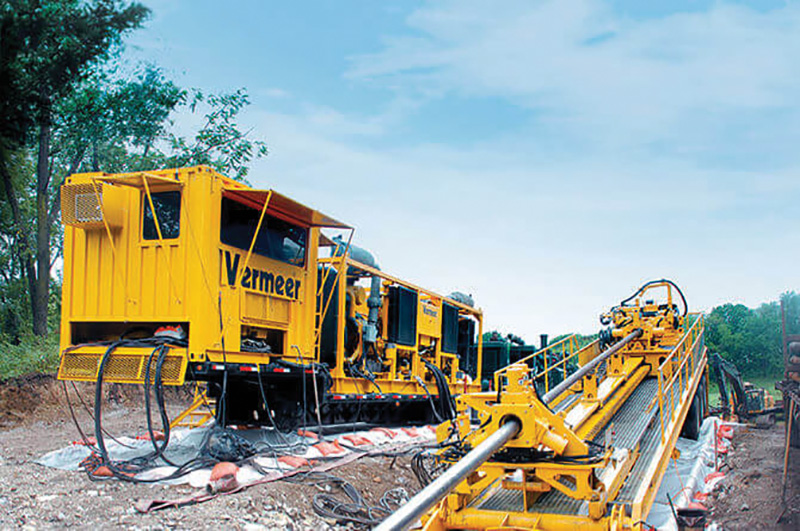September 2022, Vol. 249, No. 9
Tech Notes
Completing an 8,400-Foot Solid Rock Bore near Midland
(P&GJ) — To perform a pipeline bore as efficiently as possible beneath a busy West Texas highway, Hard Rock Directional Drilling decided to use a drill on each side of a planned intersection near the middle of the bore.
The Vermeer D1000x900 was set up on the Midland side of the bore path, and on the exit side, the crew used a Vermeer D500x500. The drills were outfitted with 8-inch (20.3-cm) mud motors and 123/4-inch (32.3-cm) bits to get the pilot bore through sandstone and limestone. At an average depth of 60 feet (18.3 m), it took 12 days for crews to complete the initial bore.
Afterward, the crew continued to use both drills to open the hole to 48 inches (121.9 cm) in diameter.
“We made a total of three passes with hole openers,” said Cory Baker, general manager for Hard Rock Directional Drilling. “We made a pass with a 24-, 36- and 48-inch (61-, 91.4- and 121.9-cm) hole openers while pumping around 1,200 gallons (4,542.5 L) of fluid per minute down the hole. The crews on both ends were pumping to make sure we got all of the cuttings out of the hole, and we had a Vermeer R9x12T reclaimer on both sides so that we could conserve water as much as possible.”
The crew used a mix of bentonite and a larger molecular weighted polymer additive to help verify the cuttings would be flushed from the drill hole. About 180,000 gallons (681,374.1 L) of water was used during the 84 days spent on the project.
After three passes were made with hole openers, the 1.7 million-pound (771,107-kg) pipe string was connected. It took the team 23 hours to pull the 30-inch (76.2-cm) pipe to its final resting place, with a maximum pull force of just under 600,000 pounds (272,155.4 kg).
The bore is part of a 4.5-mile (7.2-km-)-long pipeline installed by Fasken Oil and Gas that carries oil, gas and water from wells to a Fasken facility.






Comments